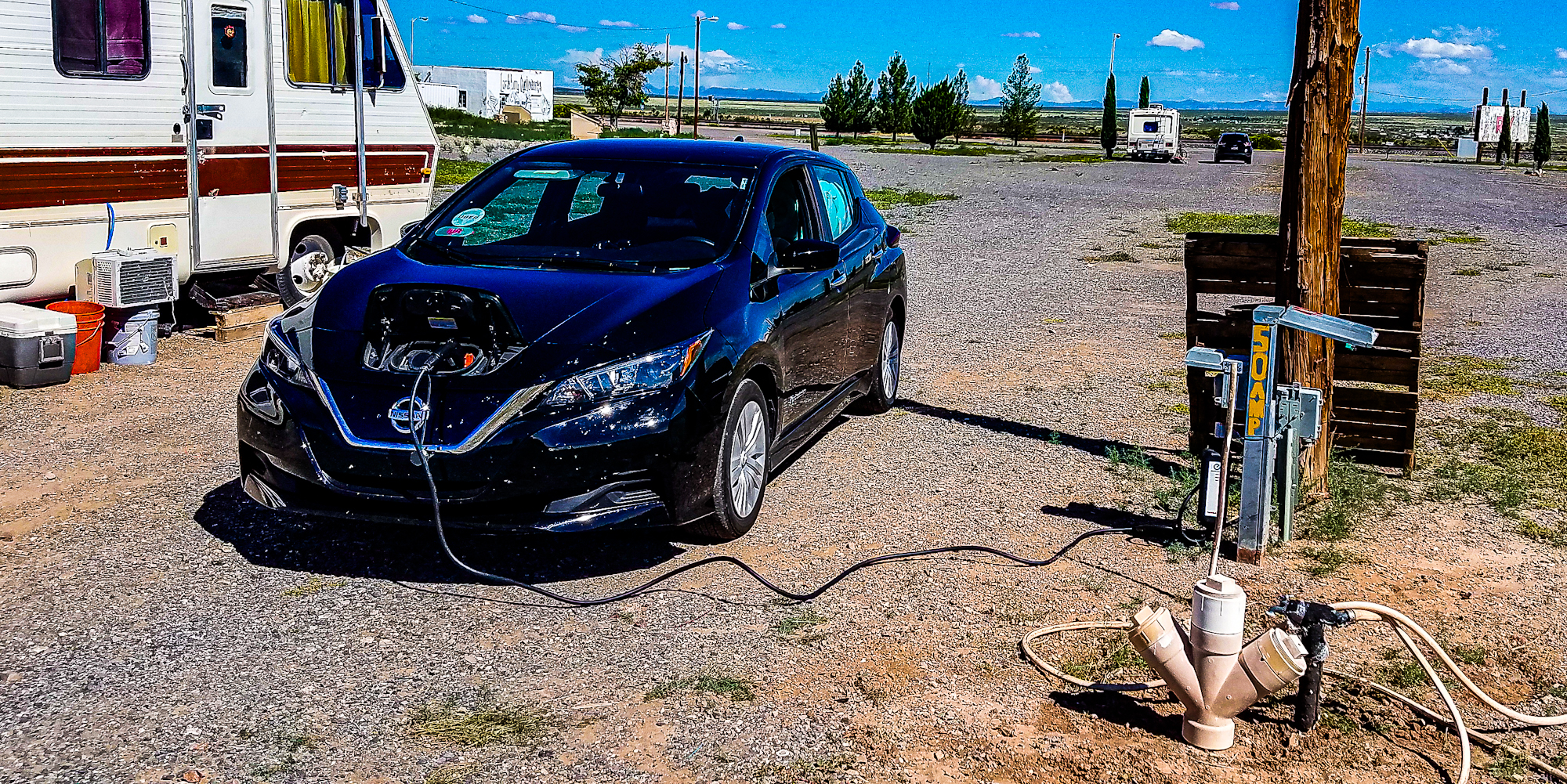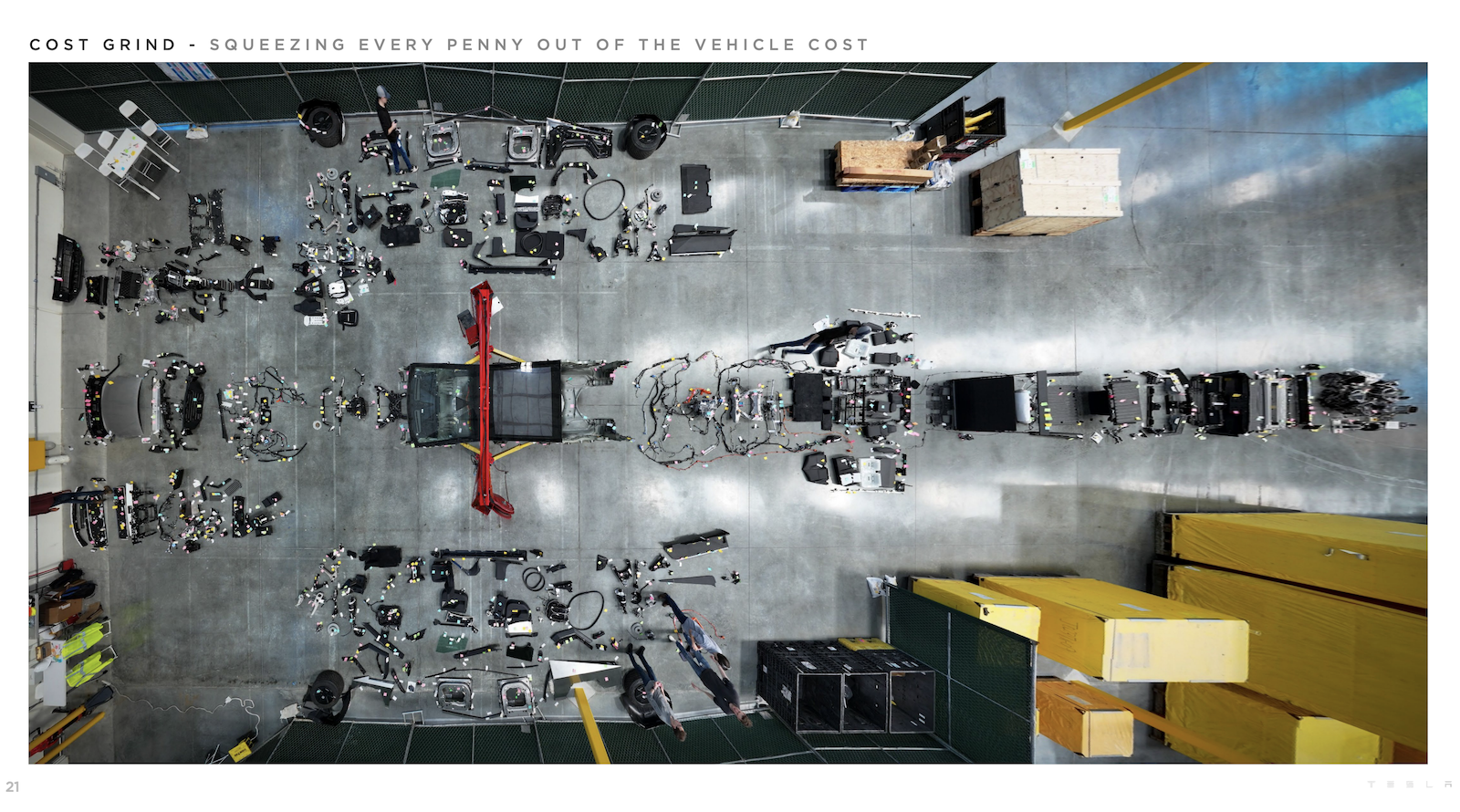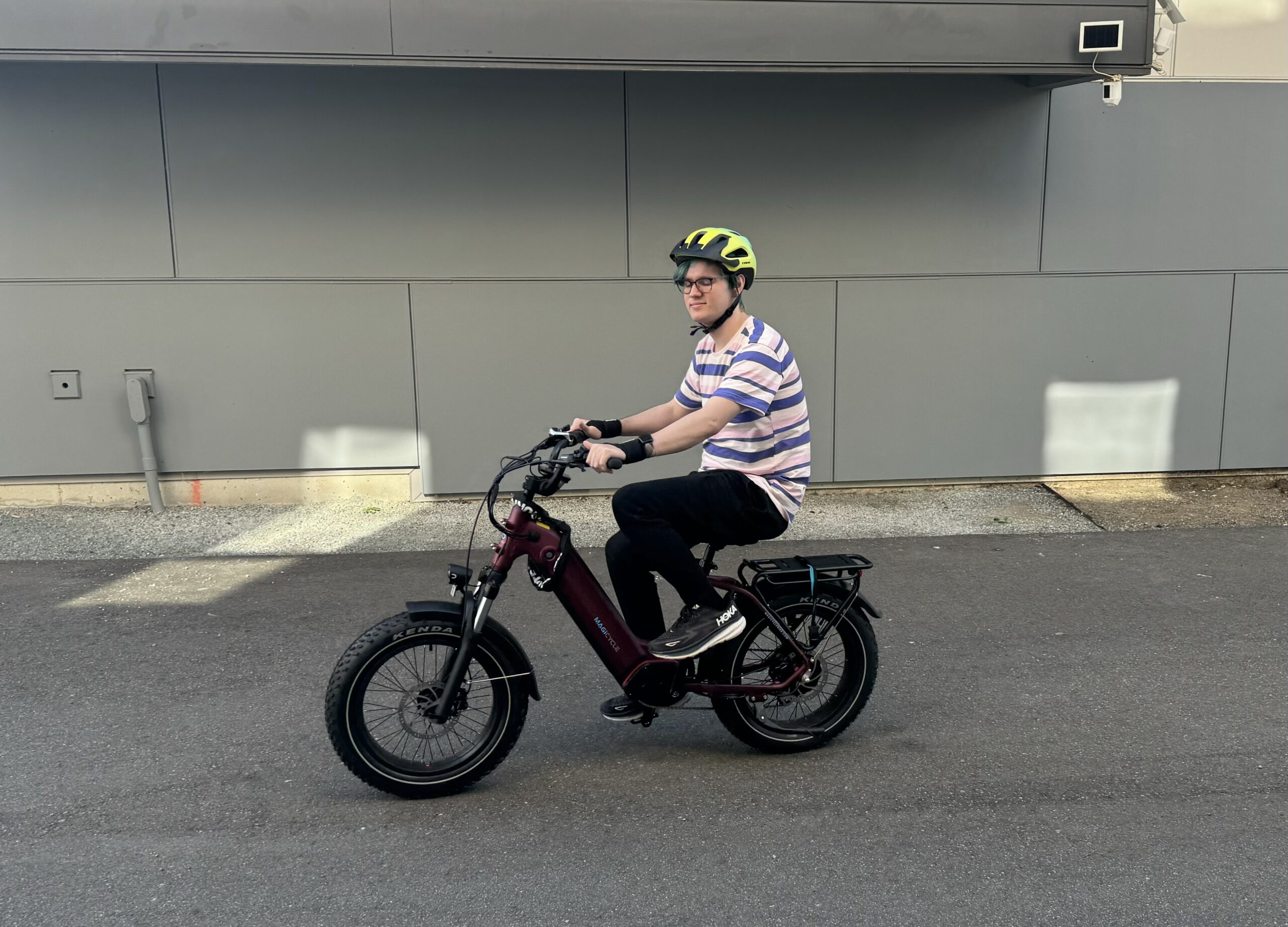Sign up for daily news updates from CleanTechnica on email. Or follow us on Google News!
Looking through some old photos recently, I came across the one at the top of this article. The occasion? The opening of Electrify America’s station in El Paso. This was back in 2019, and it was the first non-Tesla EV charging station in the whole region. When I bought the Nissan LEAF a little over a year earlier, I was living in Phoenix, and there were plenty of charging stations even for a CHAdeMO car. But, due to some family needs, I had to move back to southern New Mexico, right smack dab in the middle of a big charging dead zone. For the better part of a year, all I had access to was Level 2.
In other words, this was a big day for the LEAF and its usefulness, and things have only gotten better since.
For the “You should have bought a Tesla” crowd that will inevitably chime in without looking at the dates, keep in mind that I had bought the LEAF about a year earlier, in early 2018. There was no affordable Model 3 available at the time (production hell was just starting), and basically every other EV was out of my budget. There had been a Supercharger in El Paso for about two years, but there were still some pretty big gaps in the network, even for a Tesla, in 2018. The “golden spike” for I-10 had only happened in the Supercharger network late that year when the Fort Stockton Supercharger opened.
So, even people with more money knew what it was like to not have charging like we do today, especially 2–3 years before that.
But many EV drivers who bought in the last 2–3 years never experienced that world with no charging. So, I wanted to share some “uphill both ways” tales from owning an EV without good infrastructure so we can all (regardless of what EV we own) know how far we’ve come in the last few years! We have a LOT to be thankful for, and it’s easy to forget.
Driving for Uber & Lyft With No DC Fast Charging
When I first moved back to southern New Mexico, there was almost no business to be had providing rides. So, if I wanted to earn a few bucks and stay afloat until I got some other business ventures going, I needed to drive to El Paso, about 40 miles away. I always started with a full battery at the apartment I was living in because the property manager was cool with me pulling power from a dryer plug. But, starting out going 40 miles drained a lot of battery from the LEAF, which only had about 110 miles of 65 MPH highway range.
So, what I would usually do is drive down to the Whole Foods Market and plug into a Level 2 ChargePoint for a few while waiting for the first ride. This was a good place to use the restroom, have a snack, and rest for a few. Often, it was a customer there that needed a ride, so Whole Foods definitely got their money’s worth out of the electricity I used. But, this didn’t stop them from closing the station down later when “too many people were using it.” [Editor’s note: Head drops & shakes slowly….]
Once I picked somebody up from there or near there, I’d open up PlugShare and see where the closest charger was. If it was close by, there was a Nissan dealer with a station I could sit at. There was also a hospital and a few flaky Blink stations near UTEP. If I had gone across town, there was a BMW dealer with a charger, another Nissan dealer that thankfully kept the charger open at night, and a shopping center with an underground parking garage, restrooms, and restaurants.
Sometimes I’d go into that underground parking garage and take a nap while the car charged up if it was getting too low to take rides. Often, I’d end up needing to sit there for a couple hours to get enough range to get home at the end of the night after the bars closed on weekends.
But if I ended up taking people home to the northeast part of El Paso at night, there weren’t any Level 2 stations anywhere near there. I never got stranded out there, but had a few close calls where I’d have to hypermile over to the east side or the west side to get a charge. Once, I was pretty far northeast when it was time to go home, and I didn’t have much battery left, so I figured I’d take some backroads home going 30 MPH and made it home with only 5% left. From then on, I usually took slow roads home because charging up enough to take the freeway and go 80 MPH took longer than just hypermiling it.
One time doing that hypermiling, my luck ran out. I was actually at the closest charger to home at a hospital and decided I’d head home with only 20% battery left. I had usually left with 22% on prior nights and barely made it, but I figured I could hypermile the hills a bit more and make it. But, about a mile short of my exit, the LEAF said it wasn’t going to go any further. There was a big hill in the way that I was hoping I’d coast down, but since it died just before the hill, I had to call a tow truck for a short ride back to the dryer plug.
Road Trips With Almost Zero Infrastructure
Trying to do Uber in an EV under those circumstances might seem kind of mental, but I assure you, I’m much crazier than that. I was also dumb enough to take the LEAF on some road trips, including one that was almost 1200 miles. You can read stories of extension cords out hotel doors, rolling into state parks at 2:00 AM, and hypermiling on roads even Teslas struggle with in 2024 here, but I wanted to share one story I haven’t shared.
On one trip, I was trying to reach Tucson from Lordsburg, New Mexico. After sitting and having lunch at a sketchy RV park and wondering whether the local meth users were considering attacking me to get copper out of my car, I decided to leave before I had as much charge as I’d have liked. By the time I got to Willcox and could have hit another RV park, I thought I had enough to make it downhill to Tucson, so I kept going. But my confidence faltered when I saw how much charge the hill after Willcox ate, so I decided to see if the “The Thing” gas station would be nice enough to let me charge up a little.
When I got there, I noticed some RV pedestals around the side. So, I plugged into one and ran inside to make sure that was OK with them. The lady at the cash register said it was fine, so we had a meal. When I went back to the car to get something, I noticed that my EVSE was gone. It turned out that a manager had stolen it because he hated EVs and thought I was stealing electricity from them. The lady at the register was too afraid of the bastard to tell him that I had asked for permission, so he gave me my cord back with “a warning.”
I ended up calling the local sheriff’s department, who warned them to not steal people’s charging gear, but warned me to ask before plugging in next time instead of after because the penny’s worth of electricity that took was technically theft. I haven’t been in there since, as you can probably predict. I found out later that the guy had actually damaged the cord, but never pursued it further.
Things Are Far Better, and Still Improving
Today, that route has Electrify America stations at Lordsburg and at Benson, so most drivers don’t have to worry about charging at RV parks or gas stations with EV haters who steal your stuff these days. Now, nearly every interstate route is well-covered for EVs of every kind. Many Tesla stations are opening up for other drivers this year. GM and EVgo are putting in many more stations at truck stops, and even more stations funded by Infrastructure Bill money are going to be opening.
Many people complain when they have to plug their EV in twice to get it to charge, or get mad when there’s a 30-minute wait for a slot at a charger, but when you’ve experienced life without any Level 3 stations at all, you see it differently than today’s buyers do. None of the new crowd of owners has stalled out on the side of the road, argued with a sheriff’s deputy over a penny’s worth of electricity, or run a cord under the door at a motel room!
But, that’s the next wave of EV ownership. We can’t expect them to have the irrational and insane patience early adopters do.
Featured image by Jennifer Sensiba.
Have a tip for CleanTechnica? Want to advertise? Want to suggest a guest for our CleanTech Talk podcast? Contact us here.
Latest CleanTechnica TV Video
CleanTechnica uses affiliate links. See our policy here.





